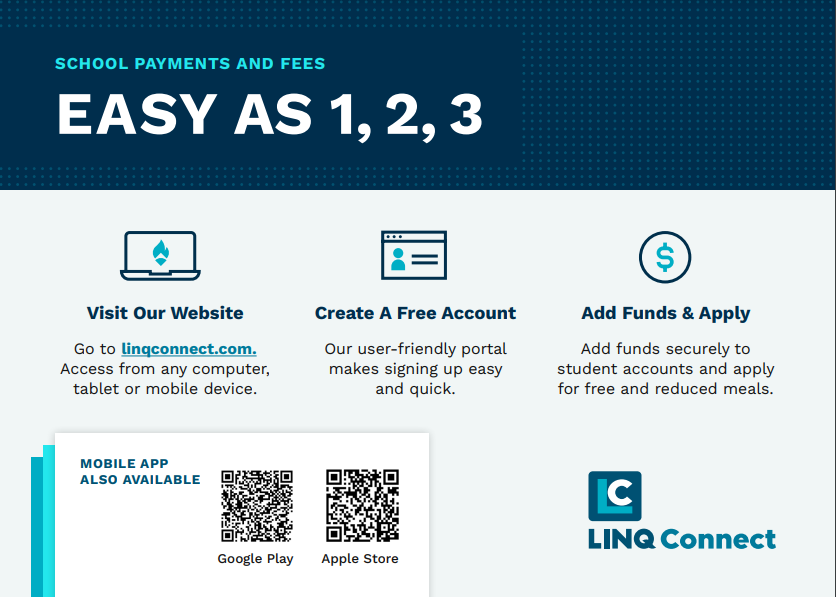Food Service
Food Service Director, Jeff Bartone
(518) 359 – 2981 extension 1019
[ Email Mr. Bartone ]
Children need healthy meals to learn.
Tupper Lake CSD offers healthy meals every school day.
We do ask that you would please complete the online Household Income Form, which can be found at this link: https://linqconnect.com/public/income-form/new?identifier=WBY84N
What is the Household Income Form?
The form collects basic information about your learner so our school can determine if they would otherwise be eligible for free or reduced-price breakfast/lunch. It is important for EVERY family to fill out this form because doing so helps bring much-needed additional money and services directly to our school! This form should be submitted each year by October 1, but will also be accepted after that date. If you have any questions, please contact Susan Frank at (518) 464-5133 or [email protected].
School districts receive funding from the state and federal governments. For each learner who would qualify for free or reduced-price breakfast/lunch, schools receive additional dollars in funding. Even a small increase in completed Household Income Eligibility forms collected results in significantly more money to support our learners.
Yes, the information you submit on the Household Income Eligibility Form is not shared by our school. Personal information submitted on the form is not shared with the state or federal government; only the number of learners who would otherwise qualify for free or reduced breakfast/lunch is shared.
Yes. If you do not wish to be considered for eligibility, please complete the online form indicating income range.
- show improvement on math, reading and standardized test scores
- establish healthier habits for later in life
- have fewer absences and incidences of tardiness
- are more likely to behave better in school
- consume more calcium, fiber, foliate and protein
Breakfast is served:
We now have LINQ Connect as one way you can add funds to your student's accounts for their a la carte items and "seconds".
To get started, go to: https://linqconnect.com/CG5JXH
Then, click REGISTER to create your account.
LINQ also has a mobile app for Apple and Android devices.
All the details, steps, and answers to frequently asked questions are in the FAQs document below.
Programs
Emergency SNAP Benefits
Meal Services to Children with Disabilities
Policies
NONDISCRIMINATION STATEMENT
In accordance with federal civil rights law and U.S. Department of Agriculture (USDA) civil rights regulations and policies, this institution is prohibited from discriminating on the basis of race, color, national origin, sex (including gender identity and sexual orientation), disability, age, or reprisal or retaliation for prior civil rights activity.
Program information may be made available in languages other than English. Persons with disabilities who require alternative means of communication to obtain program information (e.g., Braille, large print, audiotape, American Sign Language), should contact the responsible state or local agency that administers the program or USDA’s TARGET Center at (202) 720-2600 (voice and TTY) or contact USDA through the Federal Relay Service at (800) 877-8339.
To file a program discrimination complaint, a Complainant should complete a Form AD-3027, USDA Program Discrimination Complaint Form which can be obtained online at: https://www.usda.gov/
1. MAIL
U.S. Department of Agriculture
Office of the Assistant Secretary for Civil Rights
1400 Independence Avenue, SW
Washington, D.C. 20250-9410
2. FAX
(833) 256-1665 or (202) 690-7442
3. EMAIL
This institution is an equal opportunity provider.
